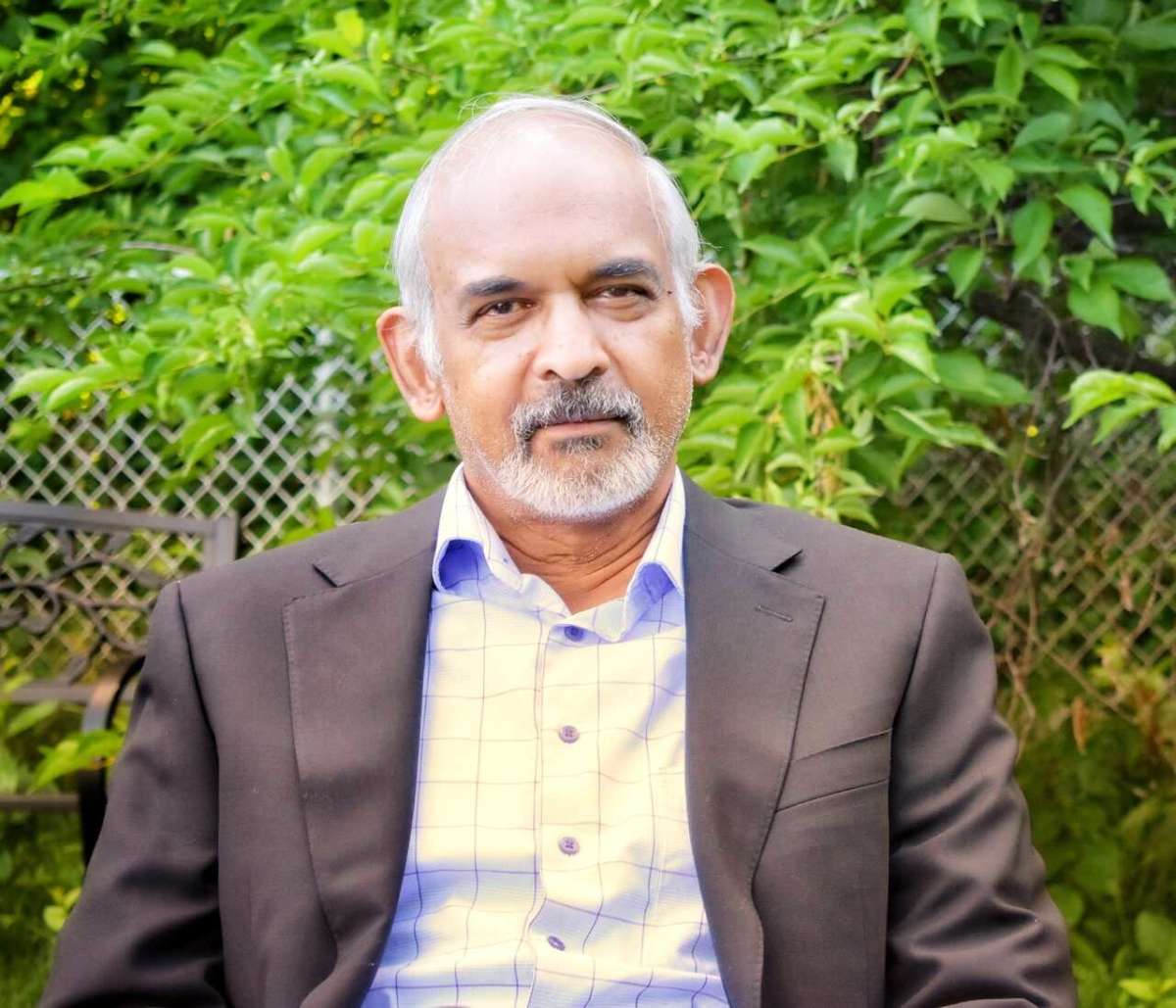Deaths Of Despair
By Jason Kowalyshyn
While we typically see an increase in mental health issues, substance abuse, suicide attempts and suicide ideation with adults during periods of increased unemployment and economic recession, we have never before seen suicidality among our children rise at such alarming rates as we have during the lockdowns of 2020/21 in Canada and around the world.
While the lives of adults and parents are important, it is our goal to bring much-needed attention to rising rates of attempted and successful child suicide during the lockdowns. These are a foreseeable consequence of the long and harsh lockdowns, and therefore are attributable to lockdown measures, which resulted in lengthy absences from school, isolation, reduced (or eliminated) social and sporting activity, loss of routines and many other ordinary behaviours and experiences that children require for adequate social development and mental health.
One might argue that our provincial governments’ initial decision to go into lockdown based on early projection models was justified. However, even if one also ignores the fact that lockdowns were unprecedented and never recommended before 2020, in 2019 the World Health Organization (WHO) itself ruled out lockdowns under any circumstances, it is certainly no longer a valid argument as we now have over 17 months of outcome data that clearly show lockdowns resulted in widespread harm to mental health and educational outcomes for children without delivering unambiguous benefits in any arena. Our governments and Public Health officials have failed in their responsibility to our children to balance risk and reward in their decisions during this pandemic.
Don’t lose touch with uncensored news! Join our mailing list today.
We have known for at least a year that statistically, children are virtually unaffected by COVID19 , except in rare circumstances in which they suffer from a compromised immune system or related health challenges. We have also known that children are not socalled “super-spreaders”. As a matter of fact, all the available data that we are aware of shows that no child under the age of 10 has ever passed COVID-19 on to an adult in any country around the world. According to Dr. Paul E Alexander, MSc PhD, McMaster University and GUIDE Research Methods Group, children are at very low risk of acquiring COVID-19 infection and are at an even lower risk of spreading it amongst themselves in a school setting. The data clearly show that children are not spreading this to adults or teachers and while the risk of serious illness to children from COVID-19 is extremely rare, it has been determined that the few children who are acquiring COVID-19 are predominantly catching the disease in their home and from their parents. Statistically the safest place for children including university-aged adolescents, is in school.
This may be the first time in recorded history that adults at a societal level are not protecting children, but are instead expecting children to suffer in order to protect adults from an infectious disease that is statistically no worse than annual influenza, except for the very old and infirm.
According to the Centers for Disease Control and Prevention (CDC), the survival rates for people who get infected with COVID-19 by age and without treatment are:
- 0-19 99.997%
- 20-49 99.98%
- 50-69 99.5%
- 70+ 94.6%
For the 0-19 age group, a survival rate of 99.997% implies a death rate of 0.003%, i.e., 3 children out of every 100,000 infected are expected to die. Note that of the 335 children (under 18) who had died with or of COVID-19 in the US (as of mid-July 2021), 100% of them had a preexisting medical condition, such as cancer or diabetes. In contrast, the CDC estimates that 434 children died of influenza in the 2019-2020 season, and only 43% of the reported cases involved children with known underlying conditions. In other words, only children with serious underlying medical conditions are at risk of death from COVID-19 , and even then that risk is lower than that of annual influenza, which we have all tolerated every single year without any special, let alone world-changing, precautions. And yet our governments enacted lockdowns resulting in severe disruptions to our children’s lives in response to a virus that is statistically less dangerous to them than regular influenza. Furthermore, following early reports that suggested asymptomatic transmission (the main means by which children might be vectors of the disease) was not a contributing factor, we now have compelling recent data indicating that asymptomatic transmission of COVID-19 is a negligible factor, if it exists at all.
Canadian statistics tell a similar story. According to Statistics Canada, in the 5 years before COVID-19 an average of 25 children aged 0–19 died of influenza each year. In the 15 months since the pandemic was declared, 11 children died with COVID, all of whom had comorbidities. These statistics demonstrate clearly that Influenza is approximately twice as deadly to Canadian children as COVID-19 . Only children with serious underlying medical conditions are at risk of death from COVID-19 , and even then, that risk is lower than that of endemic seasonal influenza, which we have all tolerated every single year without any special, let alone world-changing, precautions.
We have presented the data that indicate that, whatever the seriousness of COVID-19 as a general public health issue, it is most certainly not an issue for children, nor does allowing children to get on with their busy, interactive lives at school and elsewhere exacerbate the spread of COVID-19 . And yet we have allowed our governments to pretend otherwise. Let us turn now to the damage that this has wrought.
Here is the evidence. McMaster Children’s Hospital, in Hamilton Ontario, reported an almost 300% increase in serious youth suicide attempts with 26 youth admissions between October 2020 and January 2021 compared to only 7 in the same time period the previous year prior to lockdown. You might be tempted to think, “These are small numbers, compared to the children at risk from COVID-19 .” That would be an incorrect assertion. The facts are that in the entire province of Ontario, a total of 5 deaths with/from COVID-19 have been reported for all people under age 20. More than 5 times as many children attempted suicide in a single Ontario Region in a 4-month period of lockdowns as died from COVID-19 in the entire Province of Ontario since the start of the pandemic.
McMaster Children’s Hospital also reported that youth substance abuse has doubled and child eating disorders have increased 90% during lockdown compared to the previous year.
According to a peer-reviewed study by the American Academy of Pediatrics, a Texas hospital reported that child suicide attempt was 2.34 times higher in March 2020 compared to March from the previous year. It also reported that suicide ideation was 1.6 times higher during that same month. The average age of children in the study was only 14 years old. The study suggests that children, unlike adults, do not need to suffer privation for long periods before they resort to suicide ideation. They are more immediately sensitive to the uncertainty, isolation, lack of structure, family tension, and limited access to doctors, teachers, and coaches. Just the fear of these losses, the mere thought that they could be away from their friends has an immediate negative impact on children’s mental health, thus one can only imagine how children feel and respond when these losses become real.
Pima, the second-largest county in the state of Arizona, reported a 67% increase in child suicide during the 2020 lockdown.
Suicide is the second leading cause of death among people aged 10-24, after accidents. It therefore makes no sense of any kind to put extra stress factors that would exacerbate suicide ideation to this demographic.
We have included data from the United States not only to supplement our limited Canadian data, but also to indicate that this problem is widespread throughout North America where lockdowns of this nature have been carried out. It also sheds light on the various governments’ ignorance or concealment of information about child suicide rates during the lockdown. It should be obvious that removing children from their friends, coaches, routine, sports, and ability to pursue their life’s ambitions and dreams will have an immediate and strongly detrimental effect on their mental health; despite this, the Canadian government has implicitly encouraged our health care institutions and Statistics Canada to downplay the severity of youth suicide during the pandemic. Preliminary suicide statistics from the province of Alberta suggest that suicides of people under the age of 19 have only increased by one death during the 2020 lockdown compared to 2019. It is difficult to square this claim with the report from McMaster Children’s Hospital, in which named officials appear to back up the alarming increases that are quoted. Even reports from the early days of the COVID-19 outbreak indicated that the Canada Suicide Prevention Service was significantly busier: by April 2020, they reported 50% more interactions compared to the previous year, as well as a 62% increase in “active rescues” (i.e., responses to suicides in progress.)
Further evidence of a simmering crisis comes from reports that Kids Help Phone received over 4 million calls in 2020, more than double the 1.9 million calls received in 2019.
The CDC has reported that online learning causes “more risk” to emotional and other mental health issues, they surveyed adolescents between 18 and 24 and revealed that 75% admitted to mental health problems or drug use during the lockdown. In that same survey one in four young adults admitted to suicide ideation in the last 30 days. The CDC also reported a 24% increase in emergency room mental health visits with children between the ages of 5 and 11.
Boston Children’s Hospital reported a 47% increase in children hospitalized for suicide attempts and suicide ideation between July and October 2020 compared to the same period in 2019.
In January 2021, the UK Centre for Mental Health announced that 500,000 children in England under the age of 18 with no previous issues would need mental health care due to the lockdown.
British infirmaries reported that in the years preceding the lockdown, they would treat between one and two children per week for mental health and suicide attempts, but that during the lockdown they were treating an average of two per day, with some of the children as young as eight years old.
In Ontario the Youth Services Bureau of Ontario reported a 40% increase in mental health centre contacts in January 2021.
In France, it has been reported that children, some as young as eight years old, have deliberately run into traffic, overdosed on pills and self-harmed during the lockdown. And in Japan, the education ministry reported that child and adolescent suicides hit record levels.
It is crucial to emphasize that many countries around the world did not take their children out of school. Sweden, for example had zero child deaths due to Covid, despite refusing to subject its people to lockdown, and never taking children out of school. Except for a two-week extension to the school winter break. Taiwan only participated in a brief eight week lockdown where they did not take their children out of school, never used a vaccine and reopened without re-infection.
Many countries have not engaged in lockdowns for more than a few weeks, and therefore, their children have received a complete education. The major disruptions to two years of education have placed our children at a significant disadvantage, and it may take years for our children to catch up with children from other countries, who might even compete successfully against ours for admission to our own universities!
Rahul Sapra, President of Ontario Federation of University Faculty Associations, stated: “As a result of the COVID-19 pandemic and the scramble to move courses online, we have lost that human connection and educational quality has suffered.” His organization found that 62% of students and 76% of faculty believe online education has a negative impact on education quality. This should not be surprising, given that our teachers and schools were not prepared, qualified or trained to switch to a completely different teaching methodology that failed to acknowledge millions of students’ requirements for face-to-face learning, structure and support.
The use of hybrid and remote (online) learning fails to consider that over 15% of Ontario’s children live in poverty, and that 25% of Ontario’s high school students need special education assistance. It also fails to incorporate a variety of methods that face-to-face classrooms apply. Results from hybrid and remote learning for high school from several parts of Canada suggest a drop in academic performance. School boards looking at students’ midterm marks found a failure rate of 16%, almost double the rate of the previous year. Thus education is currently not only failing our children’s mental health, but is also robbing them of a proper education, which will have extensive negative impacts on virtually every aspect of their future and the future of our society as a whole.
To present another counter-example: Florida reopened without restrictions and children returned to in-person learning in schools. In contrast, 33 states that were not fully open to in-person learning had more COVID-19 cases among children than Florida. It remains unclear why our governments did not at least consider this example publicly, let alone follow it when it became clear that their approach was both successful and sustainable.
Keep in mind that in May 2020 when the CDC reported the first 68,998 deaths attributed to COVID-19 , only 12 (0.017%) were of children under the age of 17, and only one had no underlying medical conditions.
The CDC estimated that 600 children died of influenza in the 2017/2018 season, and according to the Journal of the American Medical Association (JAMA), children are at greater risk of critical illness from influenza than from COVID-19.
The Journal of Medical Virology states unequivocally that there is no evidence of child-to-child or childto-adult transmission of COVID-19. “… while children become infected by SARS-CoV-2, they do not appear to transmit infection to others.”
A biological mechanism has been proposed to explain why children are at virtually no risk of serious infection or death or even spreading COVID-19. They have comparatively few angiotensin-converting enzyme 2 (ACE2) receptors, to which the SARS-CoV-2 attaches itself in adults’ epithelial lining cells. Because children and adolescents have so few ACE2 receptors, they are at the lowest risk of severe outcomes from COVID-19.
To recap: we have presented significant amounts of evidence demonstrating that lockdowns and withdrawal from in-person schooling are destroying our children’s education and mental health, resulting in increased suicide attempts and suicide ideation. These effects were wholly predictable: ordinary parents, caregivers and teachers as well as clinical psychologists and other healthcare professionals from institutions including Sick Kids Hospital warned that forcing social distancing and masks on children would cause major, potentially irreparable psychological damage. School closures have caused our children to suffer substantial educational deficits and a loss in future income potential which could lead to a future of despair.
The problems are already evident in our children, and the longer we allow ill-informed and disengaged politicians to make scientifically indefensible decisions that are harming our children, the longer it will take to repair. Recovery and counselling will be more costly; social services, welfare, healthcare and other remedies will be heavily impacted with demand for these services likely to increase to unprecedented levels.
Beyond all reasonable proportion, especially after gaining a few months of experience and perspective on COVID-19, our governments and media have subjected young children to severe restrictions that ignore their impressionability and their almost complete reliance on the adults around them to support their growth and development in a responsible fashion. As parents, teachers and caregivers we have been complicit, forcing children to adhere to unproven nonpharmaceutical interventions (social distancing, masking, cohorting) and shutting down schools, social and sporting activities, and confining them to their homes. We have allowed our children to learn to regard one another with suspicion, as if they are walking virus factories capable of infecting and killing each other, as opposed to fellow human beings that can share love, joie de vivre, comfort and support. In short, our children have collectively suffered willful, wrongheaded neglect and abuse, and it’s time to put it to an end.
The lockdowns, school closures and related measures are the core drivers of children’s suffering and the drastic increases in child suicidality and depression over the past 18 months. The sooner we get children back in school, in sports, around their friends and into their routines, the sooner they can start to heal and to get back on track with proper social, mental and physical development. We still have a lot of work to do as a society to recover not only from COVID-19 but also from the often counter-productive interventions of our governments. For our children, it starts with them getting back in school full-time, in-person as they were before 2020.
We have focused this discussion on children’s suffering. However, we must also note that some children have been unfortunate to lose parents and other caregivers to suicide and other deaths of despair, as well as to COVID-19 and other health problems. Every one of these losses is tragic; however the deaths of despair are especially poignant and painful because in many cases key contributing factors were man-made, and therefore were preventable.
In Conclusion
Using publicly available sources, we have made the case that the numerous restrictions on children have been irrelevant and ineffectual in minimizing the spread of COVID-19. Worse, these restrictions have severely damaged children’s overall health and development, to the point of causing serious psychological stress and suicidality in many more children than have been at serious risk of severe outcomes from COVID-19.
On the basis of these publicly reported data (no doubt there are countless personal stories that would attest to the reality of these figures), we appeal to our fellow parents, teachers, school board trustees, politicians, health professionals, law-enforcement and other civic personnel – to our fellow citizens – to support us in securing the reinstatement of our children’s full-time, in-person education. For various, arguably complex reasons our government officials have let us down; it is time to relieve them of some of the unmanageable pressures of governing by making it unambiguously clear what we want. The data we have presented here are clear: we can start by ensuring that government officials receive and read this material, and respond to it appropriately.
We also appeal to you to start to take responsibility for our children’s future, and for accelerating their healing and recovery from the trauma of unnecessary lockdowns and isolation. Put plainly, there is no argument that justifies school closures and now that you have read this evidence package, you are aware of the destruction that school closures and lockdowns have caused and continue to cause to our children.
We believe that you have a duty to act to ensure that changes will be made immediately in our government and educational system to guarantee the full re-opening of our children’s schools and the full restoration – with no prospect of reversal – of all of the social interactions and opportunities that have been available to them pre-lockdown.
Thank you for reading this deaths of despair: Child Suicide Evidence Package. We have already lost the lives and the vitality of too many children. Please share this material and play your part — support a friend, speak to a child, call a teacher, challenge a politician, do whatever you can — so that we don’t lose any more children. If that’s not enough to convince you: we are on the side of truth and love, join us. It takes courage, and it may require sacrifice, but it will enlarge you and reward you.
Need more info? Like to Help?
Contact us at https://takeactioncanada.ca/
















